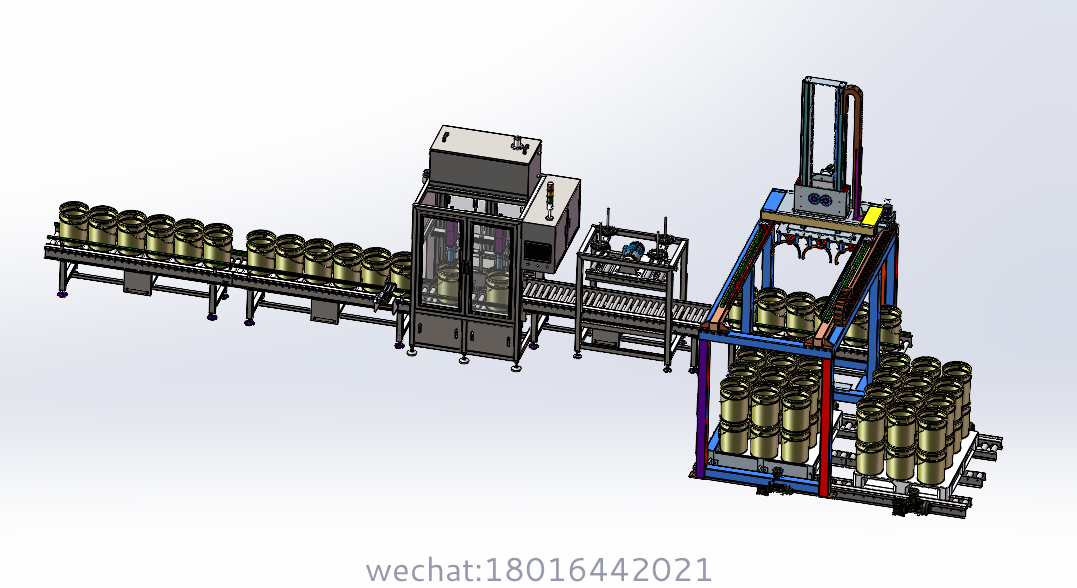Pesticide filling machine
Pesticide filling machineApesticide filling machineis a specialized industrial device designed to accurately and safely fill pesticides into containers such as bottles, cans, drums, or bags. Pesticide
- Brand::
- Model::
Pesticide filling machineApesticide filling machineis a specialized industrial device designed to accurately and safely fill pesticides into containers such as bottles, cans, drums, or bags. Pesticide
Pesticide filling machine
A pesticide filling machine is a specialized industrial device designed to accurately and safely fill pesticides into containers such as bottles, cans, drums, or bags. Pesticides, which include herbicides, insecticides, fungicides, and other agricultural chemicals, often have hazardous properties, so these machines are engineered to handle them safely while ensuring precision, efficiency, and compliance with regulatory standards.

High Precision:
Ensures accurate filling volumes to meet product specifications and reduce waste.
Safety and Containment:
Designed to prevent leaks, spills, and exposure to hazardous chemicals.
Often includes features like fume extraction and sealed filling systems.
Versatility:
Capable of handling various types of pesticides, including liquids, powders, and granules.
Durability:
Constructed from materials resistant to corrosion and chemical damage, such as stainless steel or specialized plastics.
Automation:
Fully or semi-automated systems to increase production speed and reduce manual labor.
Easy Cleaning and Maintenance:
Designed for quick cleaning to prevent cross-contamination between different pesticide products.
Customizable:
Can be tailored to specific production needs, such as filling speed, container type, and pesticide form (liquid, powder, or granular).
Liquid Pesticide Filling Machines:
Piston Fillers: For high-viscosity liquids.
Gravity Fillers: For low-viscosity liquids.
Pump Fillers: For medium to high-viscosity liquids.
Designed for liquid pesticides.
Types include:
Powder Pesticide Filling Machines:
Auger Fillers: Use an auger screw to dispense powder.
Volumetric Cup Fillers: Use cups to measure and dispense powder.
Used for powdered or dust-form pesticides.
Types include:
Granular Pesticide Filling Machines:
Weighing Fillers: Use scales to measure precise amounts.
Volumetric Fillers: Use measuring chambers for consistent fills.
Designed for granular or pellet-form pesticides.
Types include:
Semi-Automatic vs. Automatic Machines:
Semi-Automatic: Requires some manual intervention, such as placing and removing containers.
Automatic: Fully automated, handling container placement, filling, and sealing.
Rotary Filling Machines:
High-speed machines with multiple filling heads for large-scale production.
Ideal for filling containers simultaneously.
Filling liquid pesticides into bottles, cans, or drums.
Packaging powdered pesticides into bags or containers.
Dispensing granular pesticides into bags or boxes.
Agricultural and industrial pesticide production.
Improved Efficiency:
Faster filling speeds and reduced downtime.
Consistency:
Uniform fill levels across all containers.
Cost Savings:
Reduced material waste and labor costs.
Safety:
Minimized human exposure to hazardous chemicals.
Compliance:
Meets regulatory standards for pesticide handling and packaging.
Scalability:
Suitable for small, medium, or large-scale production.
Pesticide Form:
Determine whether the machine is suitable for liquid, powder, or granular pesticides.
Production Volume:
Match the machine's capacity to your production needs.
Container Type and Size:
Ensure compatibility with your packaging (e.g., bottles, drums, bags).
Automation Level:
Decide between semi-automatic or fully automatic systems based on your budget and production scale.
Safety Features:
Look for features like sealed filling systems, fume extraction, and spill containment.
Ease of Cleaning:
Important for switching between different pesticide products.
Budget:
Balance initial cost with long-term benefits and ROI.
Accutek Packaging Equipment: Offers versatile filling solutions for liquids and powders.
All-Fill Inc.: Specializes in powder and granular filling machines.
Krones: Known for high-speed liquid filling machines.
Bosch Packaging Technology: Provides advanced filling and packaging systems.
If you need help selecting a pesticide filling machine or have specific requirements, feel free to provide more details!